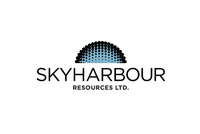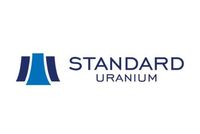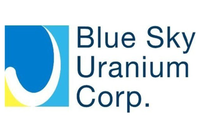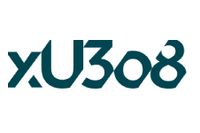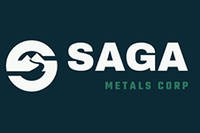Industry analysts see early signs of a crucial turnaround for both uranium spot prices and uranium mining shares as the market heads toward a supply deficit.
This past year may have been a sour one for uranium spot prices, but 2012 brought many positive developments for market fundamentals — especially in the second half of the year. Industry analysts see these developments as early signs of a crucial turnaround for uranium spot prices and uranium mining shares.
The uranium market has been on a long and bumpy ride to recovery since the 2008 financial crash crippled the commodities sector. Throughout the second half of 2010, investors cheered as the U3O8 spot price surged more than $30/lb, eventually hitting a pre-crash high of $72/lb in January 2011. However, the industry fallout following the Fukushima Daiichi nuclear disaster in March of that year wiped out most of the rally’s gains and spot prices remained range-bound, between $49/lb and $52/lb, for nearly a year.
In 2012, uncertainty was the dominant factor affecting spot prices. Previously nuclear-reliant nations like Japan and Germany signaled that they might be winding down their nuclear programs, while the potential that offloaded supply could flood the market made many buyers hesitant to buy at $50/lb, driving short-term spot prices down to $40/lb early in the last quarter.
The most significant development in 2012 came last month, with the pro-nuclear Liberal Democratic Party’s landslide victory in Japan’s federal election. That indicates that there will likely be a faster-paced restart program for the nation’s 48 inactive reactors.
Uranium gurus like David Talbot, senior mining analyst at Dundee Securities, believe 2013 will herald a return to the global nuclear renaissance. However, the supply/demand fundamentals leading the recovery won’t begin to have any realized impact on the spot market until the second half of the year, when Japan’s idled nuclear reactors begin to come back online.
Uranium demand growth strong
Analysts are betting on a robust long-term outlook for uranium demand — and with good reason. Nuclear power expansion projects are expanding in nations around the world, including China, India, Russia, Ukraine, the US, the UK, South Korea and even the United Arab Emirates. Data from the World Nuclear Association shows that 62 reactors will be under construction worldwide in 2013, with another 484 either planned or proposed. China leads the way with 26 nuclear reactors under construction and a five-year plan for growing its nuclear program to an installed capacity of between 70 and 80 GWe by 2020; that’s compared to its current capacity of 12 GWe. By 2030, the Asian nation hopes to extend capacity to 200 GWe.
Global demand for the nuclear fuel is expected to increase from 166 million pounds in 2011 to 226 million pounds by 2020, and should total 280 million pounds U3O8 by 2030, according to The Australian.
Aboveground uranium supply deficit expected in 2014
While it’s clear that the demand side of the uranium market will see significant growth in the years ahead, what’s still uncertain is how the market will supply that demand.
The not-so-stellar performance of the U3O8 spot price and the political fallout post-Fukushima have severely depressed share prices for the entire uranium sector, from explorers to producers. As a result, many companies have had to shelve crucial development and expansion projects — that topic has been covered extensively this year by Uranium Investing News.
Industry leaders have said it will take U3O8 spot prices of at least $70/lb to $80/lb for projects like Olympic Dam, Langer Heinrich, Kintyre and Cigar Lake to become economical once again. High-profile expansion and production deferrals coupled with the end of the HEU agreement this year have the potential to create a significantly tight market in the medium term. That could lead to a rebound in spot prices as early as the second half of 2013.
Spot price forecasts
Investors should continue to keep an eye on Japan as any real improvement in the market isn’t expected until the nation’s newly elected leaders show they’re serious about restoring its nuclear power program — once responsible for about 10 percent of global uranium demand.
Analysts expect demand to start to exceed supply in 2014. In late 2013 or early 2014, we may begin to see the current spot price more in step with the strong long-term price ($60/lb), Dennis da Silva, a resource fund manager at Middlefield Capital, told the Financial Post. UBS (NYSE:UBS) is looking for prices to return to $50/lb in 2013 and $55/lb in 2014, while Credit Suisse (NYSE:CS) has issued a much more bullish outlook, indicating that uranium should trade in a range of $80/lb to $90/lb for 2013. JP Morgan, equally bullish, anticipates a range of $78/lb to $85/lb.
Uranium mining stocks have taken a serious beating over the past few years, and 2012 was no different. The Global X Uranium ETF (ARCA:URA) — which includes industry heavies such as Cameco (TSX:CCO,NYSE:CCJ), Paladin Energy (TSX:PDN,ASX:PDN), Uranium One (TSX:UUU) and Denison Mines (TSX:DML,AMEX:DNN) — finished the year down nearly 20 percent.
The consensus among analysts is that uranium shares remain highly undervalued and, in light of the significant looming supply gap, offer huge upside potential for risk-tolerant investors willing to bet that nuclear power has a crucial role to play in meeting the world’s growing energy needs.
Below is a selection of uranium companies on the lips of most analysts today:
Cameco is one of the world’s largest uranium producers and nuclear fuel suppliers, accounting for nearly 16 percent of world U3O8 production from its mines in Canada, the US and Kazakhstan. The company recently acquired BHP Billiton’s (ASX:BHP,NYSE:BHP,LSE:BLT) Yeelirrie uranium project in Western Australia.
Energy Fuels (TSX:EFR) is a uranium and vanadium mining, production and development company with production assets in Utah and Arizona and standby mines and development projects in Colorado, Utah, Arizona and Wyoming. The company’s primary asset is the White Mesa mill, the only conventional operating uranium processing facility in the United States. In June 2012, Energy Fuels acquired all of Denison Mines’ US-based mining operations.
European Uranium Resources (TSXV:EUU) is an exploration and development company with a portfolio of projects at all stages of the exploration/development pipeline in Slovakia, Sweden and Finland. The company’s Kuriskova deposit in Slovakia could become one of the world’s lowest-cost uranium producers. European Uranium’s shareholders include global nuclear power industry leader AREVA (EPA:AREVA).
Laramide Resources (TSX:LAM) is an exploration and development company with a portfolio of advanced uranium projects in Australia and the United States. Its flagship project, Westmoreland, located in Queensland, Australia, is one of the largest projects currently held by a junior mining company. The company’s US assets include La Jara Mesa in New Mexico’s Grants Mineral Belt and La Sal in Utah’s White Mesa mining district.
Kivalliq Energy (TSXV:KIV) is an exploration company advancing Canada’s highest-grade uranium deposit outside of Saskatchewan’s Athabasca Basin. The company’s flagship project, the Angilak property in Nunavut, is host to the Lac Cinquante deposit. The deposit holds a NI 43-101 inferred resource of 1,779,000 tonnes grading 0.69 percent U3O8, totalling 27.13 million pounds U3O8.
Uranerz Energy (NYSE:URZ,AMEX:URZ) is a near-term producer with a large land position in Wyoming’s Powder River Basin. A company press release states that Uranerz plans to be “America’s next ISR [in-situ recovery] uranium producer in 2013” with the commissioning of its Nichols Ranch mine — potentially the state’s first new uranium mine since 1996. First production is anticipated in early 2013.
Ur-Energy (TSX:URE,AMEX:URG) is a near-term producer with a Wyoming-based uranium play in the Great Divide Basin — the Lost Creek ISR project. The company plans to invest between $30 and $40 million toward making Lost Creek production ready by the summer of 2013.
Securities Disclosure: I, Melissa Pistilli, hold no direct investment interest in any company mentioned in this article.


